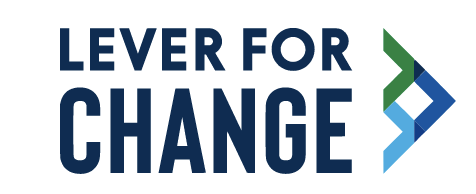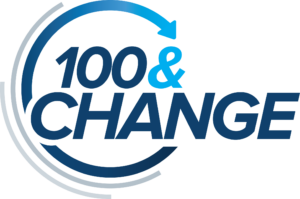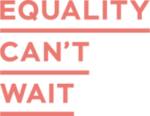Structural inequality exists across a wide range of social issues, including health care, education, economic development, environmental impact, and many more. Even when a proposal has not been designed specifically to address structural inequality, considering factors that contribute to structural inequality can help funders recognize those proposals with the potential for lasting impact.
Our team at the Center for High Impact Philanthropy partnered with Lever for Change, an affiliate of the John D. and Catherine T. MacArthur Foundation, to provide an approach that can be used and adapted by individual donors and institutional grantmakers who want to have great social impact in many cause areas.
Our partner: Lever for Change
 Founded as a nonprofit affiliate of the John D. and Catherine T. MacArthur Foundation in 2019, Lever for Change has influenced more than $800 million in grants and provided support to more than 140 organizations to date.
Founded as a nonprofit affiliate of the John D. and Catherine T. MacArthur Foundation in 2019, Lever for Change has influenced more than $800 million in grants and provided support to more than 140 organizations to date.
Lever for Change leverages investments in solutions to the world’s biggest problems — from racial and gender equity to climate change. By matching donors with problem solvers — through customized challenges and tailored funding opportunities — Lever for Change accelerates social change. Outstanding teams from these challenges form the Bold Solutions Network, which focuses on elevating organizations and catalyzing further funding.
How we got here
When the first 100&Change was launched, most of the attention was focused on the competition as a way to select a single recipient of a $100 million grant. But working with the MacArthur Foundation, we posed another question: How could such a rich collection of philanthropic solutions be useful beyond selecting a single $100 million prize winner? CHIP answered this question by analyzing the best ideas from the 1,904 proposed solutions submitted to 100&Change. The result was our guide, Bold Ideas for Philanthropists to Drive Social Change.
This time the goal of our partnership was to develop a tool that everyone in the field could use to assess proposals for their potential to address structural inequality. The Lever for Change team served as thought partners and granted our team access to the data behind 20 real-world proposals against which we tested early versions of the tool.
Faculty colleagues at the University of Pennsylvania’s School of Social Policy & Practice were critical in helping us understand existing frameworks for analyzing structural inequality and the relative strengths and limitations of these frameworks.
Many other colleagues, representing philanthropic funders, nonprofits, and the clients they serve, helped refine our initial ideas. They helped ensure that the tool was both actionable and informed by the best available evidence.
The resulting tool kit — the rubric, guidebook, scoresheet, and accompanying website — is the result of a collaborative effort between our team and the many people dedicated to doing good by dismantling structural inequalities.
Brief methodology
Analysis of Existing Frameworks and Rubrics
Our team began by reviewing more than 18 existing structural inequality frameworks (See https:// www.impact.upenn.edu/toolkits/choosingchange) so that we could build on previous efforts and address any limitations for use in understanding structural inequality and assessing the potential of philanthropic proposals. To translate our understanding of structural inequality into criteria with which to assess proposals, we also reviewed rubrics and calls for proposals from philanthropic competitions and requests for proposals to identify common criteria across rubrics, along with criteria specific to dimensions of structural inequality. We reviewed 16 philanthropic prizes, including 100&Change’s own evaluation criteria. (For a description of all frameworks and rubrics, see https:// www.impact.upenn.edu/toolkits/choosingchange)
First-Draft Rubric Elements
Based on these insights, our team identified five first-draft rubric elements that could be used to assess a proposal’s potential to counteract structural inequality. These draft elements were: Inclusivity, Durability of Power, Theory of Change, Direct Impact, and Systems-level Impact.
Faculty Review and Feedback
These first-draft rubric elements served as a basis for two rounds of one-on-one discussions with faculty at the University of Pennsylvania’s School of Social Policy and Practice. The school’s faculty has both a commitment to addressing structural inequality and expertise across specific cause areas, including housing; poverty alleviation; disconnected youth; and gender, race, and identity. During those interviews, the project team received feedback on our working definition of structural inequality, the initial elements of the rubric, and results from our team’s internal testing of the rubric on real proposals. Faculty also called our attention to literature and frameworks that were not included in our initial scan.
External Reviews and Focus Groups
Our team revised the rubric based on faculty feedback. We then asked practitioners to test the second-draft rubric against real-world proposals to ensure it was fit for practical use. Evaluators were asked to conduct mock assessments of proposals from 100&Change and Equality Can’t Wait, a prize that focuses on gender and inequity, and is administered by Lever for Change, an affiliate of the John D. and Catherine T. MacArthur Foundation. Evaluators who tested the rubric included: funders, advisory board members, and institutional partners of recent CHIP applied research projects; senior staff from shared funds who participated in CHIP’s COVID-19 Dashboard Project; alumni of CHIP’s High Impact Philanthropy Academy; and leaders of nonprofits that CHIP has previously profiled in donor guidance.
Our team then conducted focus groups to discuss evaluators’ experience with applying the criteria. We sought feedback on the usefulness of the second-draft rubric, its strenths, and areas for improvement. Based on practitioners’ feedback, we developed the final version of this rubric: We kept Inclusivity, Durability of Power, and Systems-Level Change; changed Theory of Change to Strength of Evidence; and changed Direct Impact to Organizational Capacity. We also provided new, sharpened questions within the categories to better guide users.
Conclusion
We developed the material contained in this guide to serve as a tool for any philanthropic funder interested in addressing structural inequality. It reflects more than a year of applied research, builds on dozens of existing frameworks, and incorporates the input of practitioners who tested the tool by using it to assess actual proposals provided by our partner at Lever for Change.
Our hope now is that by making this tool free and publicly available, we can equip more and more people with a way to systematically consider structural inequality in their funding decisions. For those who use the toolkit, we encourage you to share your experience with us at impact@sp2.upenn.edu. No matter how useful a rubric or scoring sheet is, it supports — not replaces — the good judgement of the individuals who use it. By sharing your experience using this toolkit, you can help ensure that subsequent versions of this guide reflect the collective judgment, tips, and advice of real-world users.
Acknowledgments
Choosing Change was generously supported by Lever for Change.
Lever for Change is an affiliate of the John D. and Catherine T. MacArthur Foundation. Thank you to Jeff Ubois and Cecllia Conrad for their thought partnership and feedback.
Thank you as well to the following faculty at the University of Pennsylvania School of Social Policy & Practice who provided expert input in the creation of this rubric and guidebook:
Amy Hillier, PhD, Associate Professor
Dennis P. Culhane, PhD, Professor
Johanna K.P. Greeson, PhD, Associate Professor
Ioana E. Marinescu, PhD, Associate Professor
We would also like to thank the following individuals who shared their expertise, offered insights, connected us to others, or provided feedback throughout this project:
Karen Bustard, Reinvestment Fund
Mary Connor, Soccer Without Borders
Andy Frazier, Community Foundation of Southern New Jersey
Sidney Hargro, National Arts Strategies
Beth Harper Briglia, Chester County Community Foundation
Emma Hertz, HealthSpark
Stacy Holland, Philadelphia School Partnership
Mari Kuraishi, Jessie Ball duPont Fund
Ben Miller, Well Being Trust
Stephanie Miller, United Way Chester County
Dan Owens, Last Mile Health
Danisha Patel, Long Arc Foundation
Jessica Ranweiler, Jewish Federation of Greater Philadelphia
Hilary Rhodes, William Penn Foundation
Misti Sangani, Bank of America Private Bank
Ruth Shaber, Tara Health Foundation
Wes Somerville, Lenfest Foundation
Mischico Warren, The Foundation for Delaware County
Special thanks to the following colleagues at the Center for High Impact Philanthropy for their assistance and support:
Kelly Andrews, MLA, Director of Knowledge Management and Marketing
Carol A. McLaughlin, MD, MPH, MSC, Senior Advisor, Global Public Health
Tamla M. Tinsley, Program Coordinator



